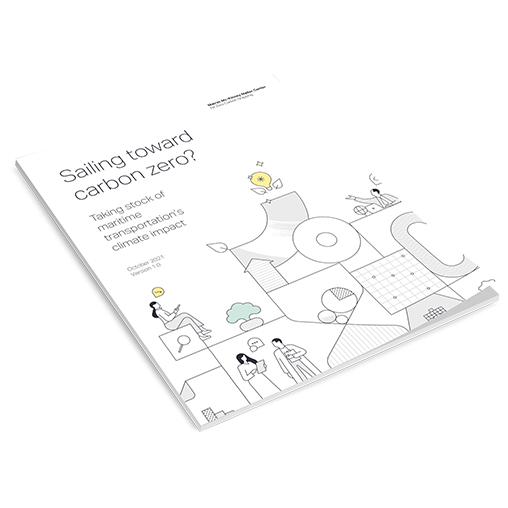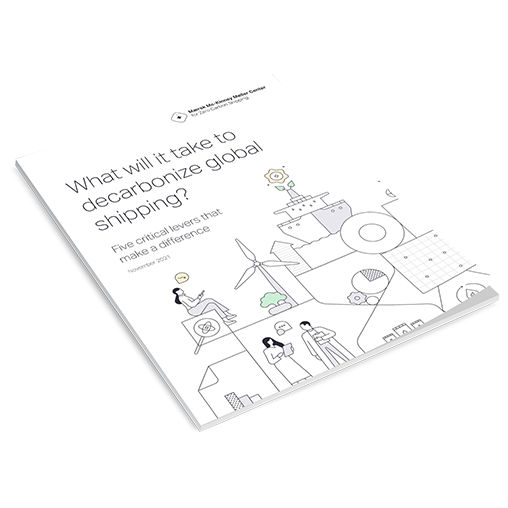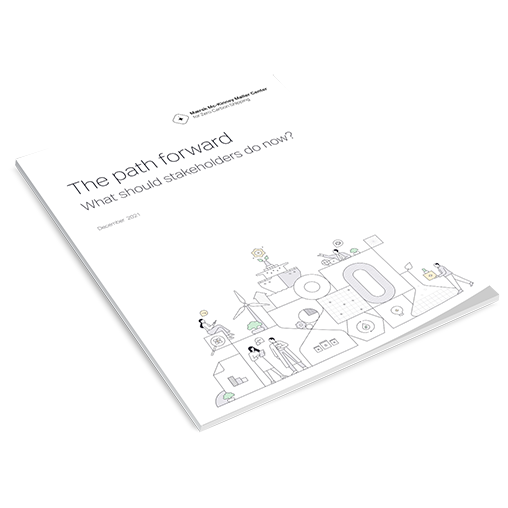Persistent logjams in the global supply chain have brought the shipping industry under intense scrutiny in recent months. Although much of the focus has been on devising solutions to ameliorate the short-term crunch, a graver, longer-term issue facing the sector deserves more attention: reaching carbon neutrality by 2050.
As the world becomes more mindful of sustainability issues, it is incumbent on the maritime sector to do its part in creating a more sustainable future. Shipping is responsible for 3 percent of global carbon emissions (300 million tons CO2), and based on its current trajectory, shipping volumes are set to increase by about 1.3 percent on average annually between now and 2050.
Guided by the conviction that steering the international maritime industry toward decarbonization is not only the socially responsible thing to do, but also an opportunity for our generation of shipping leaders to build a lasting legacy by helping address one of the world’s most intractable problems, McKinsey was the first major consulting firm to enter into a knowledge partnership with the Mærsk Mc-Kinney Møller Center for Zero Carbon Shipping in April 2021.
The Mærsk Mc-Kinney Møller Center for Zero Carbon Shipping was established in 2021 in Copenhagen as an independent, non-profit research institute dedicated to decarbonizing the maritime industry. The Center aims to bring together stakeholders and strategic partners from the public and private sector to collaborate on identifying, demonstrating, and maturing viable operational zero-carbon solutions and their transition pathways across the maritime value chain.
In October 2021, the Center released its inaugural Industry Transition Strategy, which discusses developments in the maritime industry and outlines potential next steps, drawing from current data and proprietary modeling. The Center has developed the NavigaTE model to help stakeholders understand the most plausible decarbonization pathways. It analyzes the total cost of ownership for different ship-efficiency technologies and alternative fuels based on industry inputs and cost forecasts, along with the impact of different customer, financial-sector, and regulatory interventions. McKinsey research was foundational to the development of the NavigaTE model.
The following series of three short-form articles provides a synthesis of some of the key messages from the Industry Transition Strategy. Each instalment focuses on a specific aspect of the maritime industry’s path toward decarbonization. The first article takes stock of where we are and where we are headed if we don’t step up our efforts, the second unpacks the toolkit of five critical levers that have the biggest decarbonization impact, and the final instalment concludes by outlining the concrete steps that stakeholders can take now to kickstart (or accelerate) their journey toward zero-carbon shipping.
This series of articles and the Industry Transition Strategy are only the beginning. Our hope is that our continuing work with the Center will equip stakeholders with the information they need to progress the industry toward a greener, more sustainable future.
Our starting point: Tracking global shipping’s environmental impact
We present our best view of where current decarbonization efforts will lead the industry by 2050, based on current data. Despite advances in ship-efficiency technologies and alternative fuels, challenges such as high costs of alternative fuels, misalignment of incentives, and a lack of consensus are stymieing meaningful progress. Unless truly innovative solutions and a reevaluation of how business is done take place, the industry may be unable to reduce emissions fast enough to reach carbon zero by 2050.

Five decarbonization levers
Thankfully, the maritime industry is not without the necessary tools to steer it to carbon zero by 2050. Our research indicates that the greatest impact will be produced by levers in five critical areas: technology advancements on ship, energy and fuel advancements, policy and regulation, mobilization of the financial sector, and customer willingness to pay for decarbonized shipping. All five levers have to be activated in unison to trigger the reinforcing effect necessary to create meaningful change; using these levers in isolation is insufficient.

The path forward: concrete steps for shipping stakeholders
The series concludes by outlining the actions that relevant stakeholders can undertake now to accelerate the pace of decarbonization in the shipping industry. Using LEAF as a mnemonic device, we list four key priority areas: Level the playing field for shipping players, Energy efficiency support, Alternative fuel deployment at scale, and First mover support. Both private players and the public sector play crucial roles, and a successful transition to carbon zero will require a culture of collaboration and innovation. The better stakeholders are at working together and taking action, the higher the odds are for the sector to become the catalyst for global decarbonization that the world needs.
